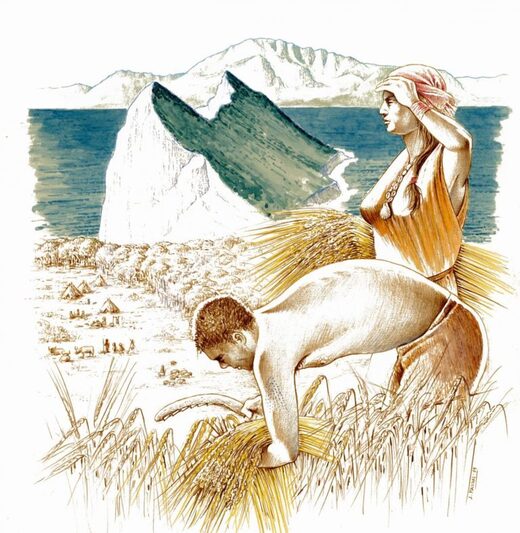Previous research has suggested that a sexual division of labor existed in Europe during the transition to the Neolithic period, when farming practices spread across the continent. However, many questions remain as to how different tasks became culturally associated with women, men, and perhaps other genders at this time.
Comment: Notably the article only speculates on 'other genders', because, as the skeletons will likely attest, there are only 2: Sex differences in immune responses to viral infection
To provide further insights, Masclans and colleagues analyzed over 400 stone tools buried in graves in various cemeteries in central Europe about 5,000 years ago during the Early Neolithic. They examined the tools' physical characteristics, including microscopic patterns of wear, in order to determine how the tools were used. Then, they analyzed these clues in the context of isotopic and osteological data from the graves.
The analysis showed that people of male biological sex were buried with stone tools that had previously been used for woodwork, butchery, hunting, or interpersonal violence. Meanwhile, those of female biological sex were buried with stone tools used on animal hides or leather.
The researchers also found geographic variations in these results, hinting that as agricultural practices spread westwards, sexual division of labor may have shifted. The authors note that the analyzed tools were not necessarily used by the specific people they were buried with, but could have been chosen to represent activities typically carried out by different genders.
These findings provide new support for the existence of sexual division of labor in the early Neolithic in Europe. The authors hope their study will contribute to better understanding of the complex factors involved in the rise of gender inequalities in the Neolithic, which may be heavily rooted in the division of labor during the transition to farming.
The authors add: "Our study points towards a complex and dynamic gendered social organization rooted in a sexed division of labour from the earliest Neolithic."
Article Source: PLOS news release
*Masclans A, Hamon C, Jeunesse C, Bickle P (2021) A sexual division of labour at the start of agriculture? A multi-proxy comparison through grave good stone tool technological and use-wear analysis. PLOS ONE 16(4): e0249130. https://doi.org/10.1371/journal.pone.0249130




Comment: It's likely that as long as there have been humans, divided by biology into males and females, certain jobs have been gender specific. And there's a reason that these farm related gendered roles didn't change much over thousands of years, and that's because, usually, when your survival depends on it, the job goes to the most capable: